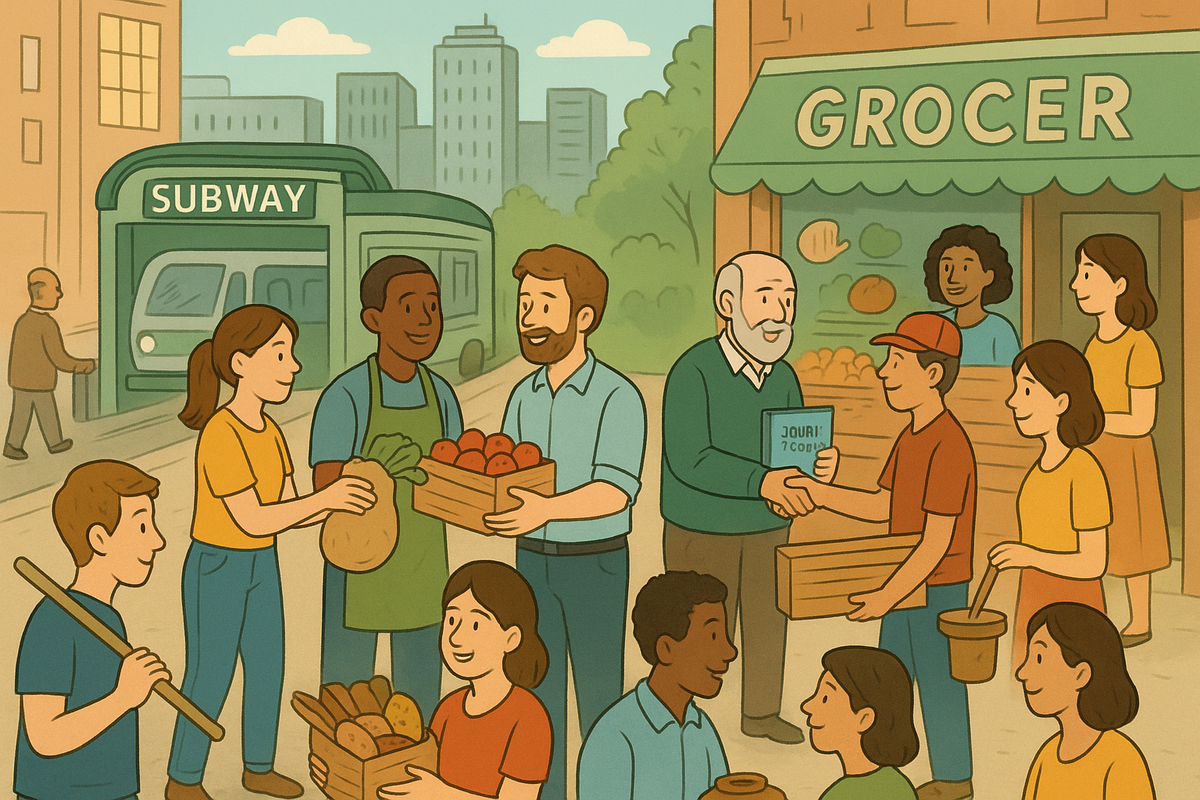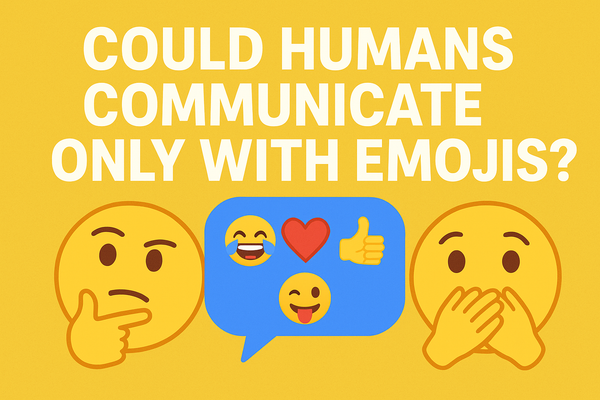Would Cities Function Without Money? – A Barter-Driven Modern Metropolis

For thousands of years, cities have relied on some form of currency to keep trade, services, and economies flowing. But what if money—coins, cash, credit cards, and digital payments—disappeared overnight? Could a city function on barter alone, with residents trading goods and services directly in a system that feels both ancient and futuristic?
Let’s imagine the mechanics, challenges, and quirks of a modern metropolis running without money
A Throwback to Barter Systems
Long before banks, stock markets, or contactless payments, human societies thrived on barter. Farmers swapped wheat for livestock, potters traded clay jars for textiles, and communities operated through direct exchange. Historical records suggest Mesopotamian civilizations (around 6000 BCE) leaned heavily on barter before standardized currency was developed.
Fast forward to today—our cities have grown into complex organisms, powered by global trade networks, financial markets, and an invisible web of digital money. But a barter-driven city would attempt to rewind the clock while overlaying modern systems of logistics, technology, and human creativity.
The Daily Commute Without a Wallet
Imagine stepping into the subway and instead of tapping a metro card or phone, you hand over a loaf of bread, a bag of coffee beans, or perhaps a service voucher you received from your neighbor who fixed your Wi-Fi. The ticket booth becomes less about scanning codes and more about evaluating whether your trade has value equivalent to one train ride.
Public transport workers, in turn, would collect an eclectic set of goods—vegetables, clothes, even carpentry labor slips. Storage and redistribution centers would pop up around stations, ensuring staff could trade their “wages” further down the line. Essentially, the daily commute turns into a continuous barter chain reaction.
Grocery Shopping as Negotiation Theater
In a moneyless metropolis, supermarkets would transform into lively marketplaces. Instead of price tags, you’d see exchange boards:
- “One bag of rice for three kilograms of fresh fruit.”
- “A jar of honey for an hour of tutoring in Spanish.”
Every grocery run becomes part shopping, part haggling, part improv theater. Shoppers would carry with them not just tote bags, but also mental catalogs of what they can offer in exchange. Apps could emerge to match potential trades before you even step into the store—think Tinder, but for carrots and coffee beans.
Housing and Rent in Barter Terms
One of the biggest challenges for a barter-only city would be real estate. Landlords aren’t going to accept a sack of potatoes as monthly rent—not unless they own a French fry empire. Housing would likely push barter toward more standardized units of trade. Residents might pool services: electricians, plumbers, cleaners, and cooks banding together to maintain buildings in exchange for shelter.
Alternatively, collective housing models could emerge, resembling modern co-ops where residents contribute labor hours instead of rent. This could reduce inequality, but it might also trigger endless debates—“Is teaching piano for two hours really equal to unclogging the communal plumbing?”
Healthcare Without a Bill
Hospitals in a barter-driven metropolis would resemble community-driven institutions. Doctors could be compensated with a mix of food, artisanal crafts, or even digital service credits. But the challenge lies in high-value services like surgery or complex treatments. Could one really trade their way into a life-saving heart surgery?
Here, technology might step in. Blockchain-powered barter systems (already explored in projects like BarterChain) could quantify and record trades in a secure way. Essentially, while money is absent, data becomes the silent replacement, ensuring exchanges feel “fair” across the city.
The Rise of Digital Barter Apps
Barter may seem primitive, but in a city with smartphones, it could look surprisingly sleek. Platforms like Swap.com and Freecycle already operate as barter-based or gifting networks. In a fully moneyless city, these apps would evolve into citywide barter banks—tracking who owes what, who has what, and facilitating multilateral trades.
For example:
- Alice wants bread.
- Bob wants web design.
- Clara wants a haircut.
The system matches them in a circular chain, ensuring each gets what they need without direct one-to-one swaps. Suddenly, barter looks less like ancient haggling and more like futuristic logistics.
The Humor of a Barter City
Of course, the practicalities come with comedic quirks:
- Coffee shop queues taking 20 minutes because customers argue whether a homemade candle equals a cappuccino.
- Dating dilemmas where dinner invitations turn into negotiations about how many jars of pickles equal a shared sushi platter.
- Corporate salaries being delivered in goats, artisanal cheeses, or renewable energy credits. (Imagine tech workers in Silicon Valley accepting solar panel installation hours as a bonus package.)
The absurdity, while humorous, highlights the reason money became so dominant: it simplifies human exchange.
Potential Benefits of a Moneyless City
- Community Building – Direct exchanges strengthen social bonds, reminding people that behind every service is a person, not just a price tag.
- Reduced Inequality (in theory) – Access to essentials depends less on income and more on participation and contribution.
- Sustainability – Overproduction may decline, since trade relies on real needs and skills, not abstract financial speculation.
- Creativity Explosion – With value untethered from money, people’s skills—whether painting murals, baking bread, or offering yoga lessons—gain new recognition.
The Dark Side of Barter
But we can’t overlook the risks:
- Complexity – Every transaction requires negotiation, slowing down urban life.
- Storage Problems – Workers can’t exactly hoard perishable “wages.”
- Inequality Reborn – Those with high-demand skills (doctors, engineers) gain disproportionate power, while others might struggle to barter fairly.
- Global Trade Collapse – Cities still rely on international imports (fuel, medicine, electronics). Without money, global exchanges grind to a halt.
Could It Actually Work?
Most likely, a fully moneyless metropolis wouldn’t sustain itself long-term. But hybrid systems could flourish—cities where money is used sparingly for large-scale trade, while barter dominates local, community-level exchanges. In fact, many “alternative economies” already thrive worldwide. From time banks (where people exchange labor hours) to local barter markets in Argentina during financial crises, these models prove barter can supplement, if not fully replace, money.
A City Both Ancient and Futuristic
A moneyless city might look chaotic at first glance—part Renaissance marketplace, part blockchain-powered experiment. Yet, in a world increasingly skeptical of financial institutions and digital currencies, the appeal of barter is resurfacing.
Would cities function without money? Yes, but probably in messy, creative, and uneven ways. And perhaps that’s the beauty of the thought experiment: a reminder that while money dominates modern life, the real wealth of cities lies in people’s ability to trade, share, and build together—whether with cash, credit, or carrots.




